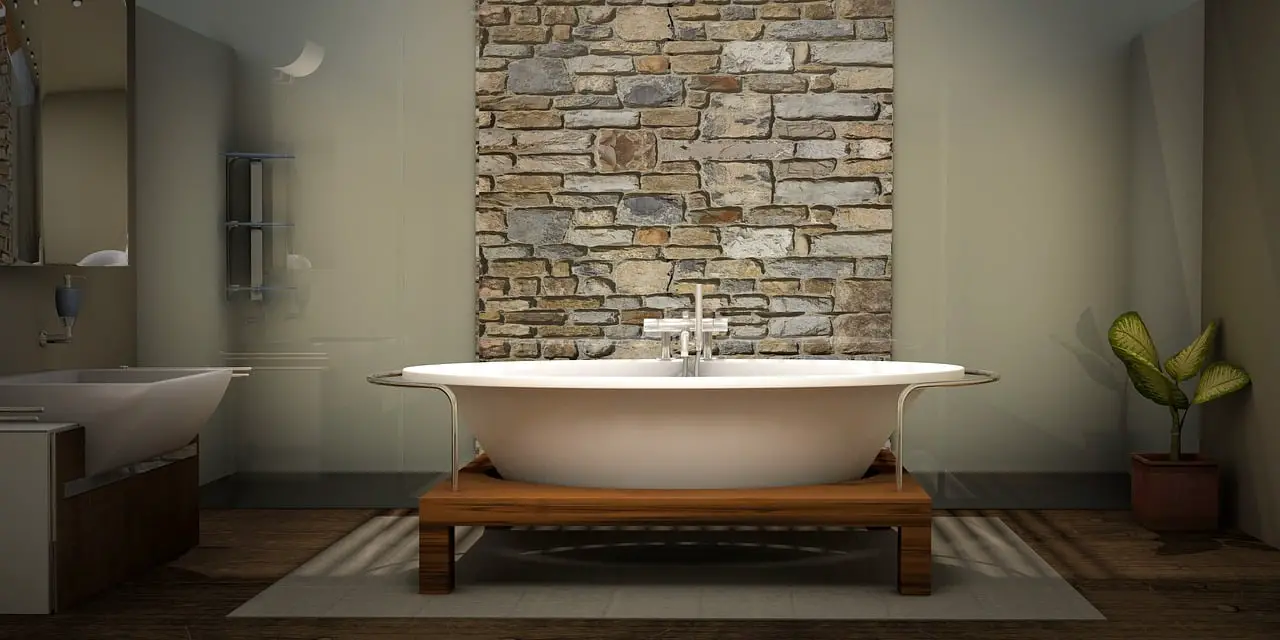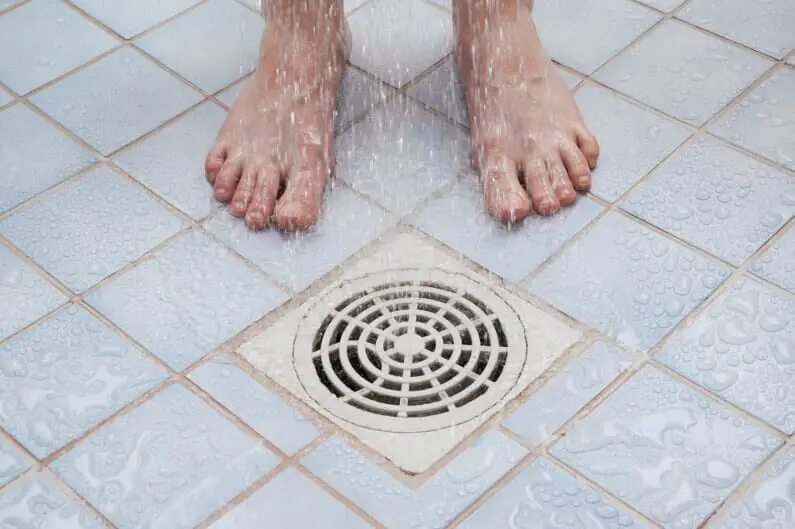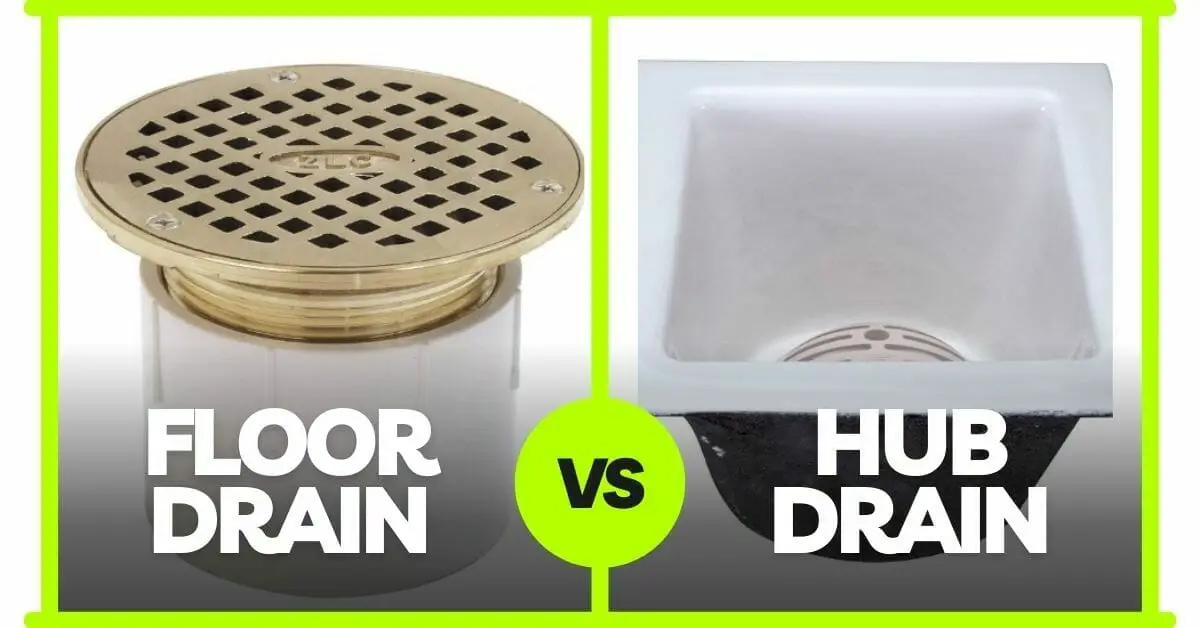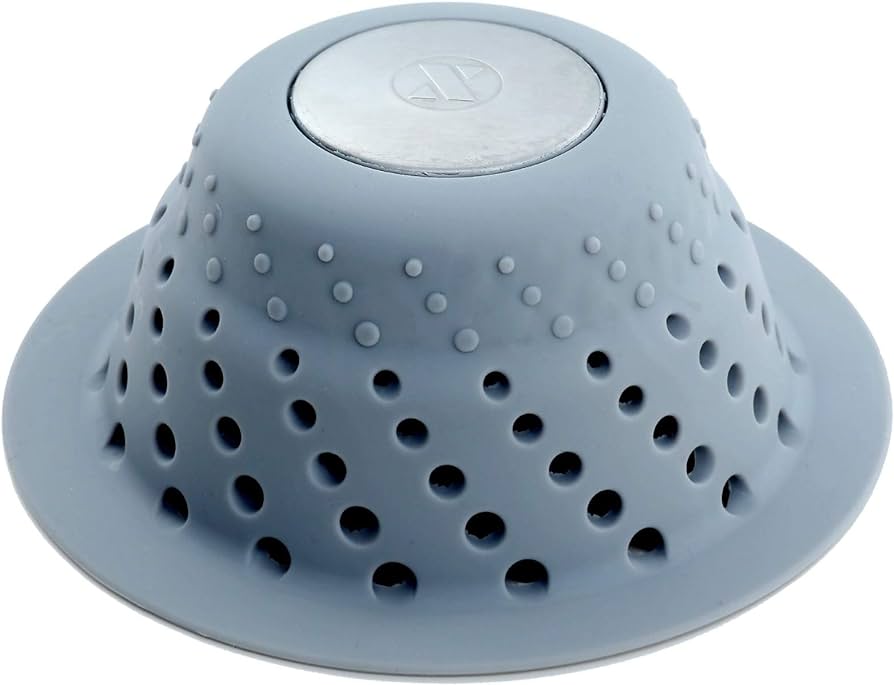A wall shower plumbing diagram illustrates the layout and connections of pipes, valves, and fixtures. It ensures proper installation and water flow.
A wall shower plumbing diagram is essential for both DIY enthusiasts and professionals. It clearly shows the arrangement and connection points of pipes, valves, and fixtures. This visual guide helps understand the water flow, ensuring efficient and leak-free installation.
It also aids in troubleshooting any plumbing issues that may arise later. Knowing how to read such a diagram can save time and prevent costly mistakes. It serves as a roadmap, guiding you through a shower system’s complex network of plumbing components.
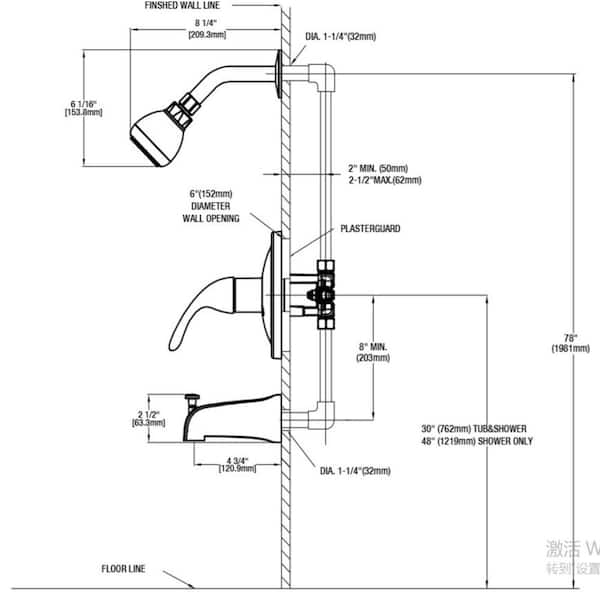
Credit: www.homedepot.com
Essential Components
Understanding a Wall Shower Plumbing Diagram is crucial for anyone wanting to install or repair a shower. By learning about the Essential Components, you can ensure that your shower functions efficiently. This guide will help you grasp the key elements, making your plumbing tasks more accessible and practical.
Pipes And Fittings
Pipes and fittings are the backbone of any shower plumbing system. They transport water from the main supply to your showerhead. Copper and PVC pipes are commonly used due to their durability. Let’s break down their roles:
- Copper Pipes: These are strong and resistant to high temperatures.
- PVC Pipes: These are lightweight and easy to install.
By choosing the right pipes and fittings, you ensure a leak-free and efficient shower system. Proper installation and maintenance are key to long-lasting performance.
Shower Valve
The shower valve is a critical component in your wall shower plumbing diagram. It controls the water temperature and flow. There are several types of shower valves:
- Manual Valves: You adjust these by hand to mix hot and cold water.
- Thermostatic Valves: These keep water at a steady temperature.
Thermostatic valves are especially useful for preventing scalding. They automatically adjust the mix of hot and cold water.
Water Supply Lines
A wall shower plumbing diagram helps understand the layout of pipes behind your shower wall. Knowing the water supply lines is critical. These lines bring water to your shower head. The two main lines are the cold and hot water lines.
Cold Water Line
The cold water line carries cool water to your shower. This line starts from the main water supply. It travels through pipes to your shower valve. Here are some key points about the cold water line:
- The cold water line is usually blue.
- It connects to the right side of the shower valve.
- It must be insulated to prevent freezing.
Insulating the cold water line helps to keep the water temperature stable. It also protects the pipes from the cold weather. The pipe material can be copper, PEX, or PVC. Each material has pros and cons:
| Material | Pros | Cons |
|---|---|---|
| Copper | Durable, Long-lasting | Expensive, Hard to Install |
| PEX | Flexible, Easy to Install | Not UV Resistant, May Burst if Frozen |
| PVC | Cheap, Easy to Work With | Not as Durable, Can Crack |
Choose the suitable material for your cold water line to ensure a stable and efficient water flow. Regular checks and maintenance can prevent leaks and other issues.
Hot Water Line
The hot water line brings warm water to your shower. This line connects to your water heater. It also travels through pipes to your shower valve. Important points about the hot water line include:
- The hot water line is usually red.
- It connects to the left side of the shower valve.
- It must be insulated to keep the water hot.
Insulating the hot water line helps to maintain water temperature. It also saves energy. Like the cold water line, the hot water line can be made from copper, PEX, or PVC. Here are some tips for the hot water line:
- Use copper for durability and heat resistance.
- Choose PEX for flexibility and easy installation.
- Consider PVC for cost savings, but be cautious of its durability.
Regular maintenance of the hot water line is essential. Check for any signs of wear and tear. This ensures a smooth and efficient water supply to your shower.
Drainage System
A wall shower plumbing diagram helps understand how water flows and drains. The drainage system is a crucial part of this setup. It ensures water leaves the shower area efficiently. Proper drainage prevents water damage and mould growth. The diagram shows all components and their connections.
P-trap
The P-Trap is an essential part of the drainage system. It is a U-shaped pipe found under the shower drain. The P-Trap holds a small amount of water. This water acts as a barrier. It stops sewer gases from entering the bathroom.
Here are some key points about the P-Trap:
- Prevents odors from coming back up the drain.
- Catches debris to prevent clogs in the main pipes.
- It must be cleaned regularly to ensure proper function.
- It should be installed correctly to avoid leaks.
Having a well-maintained P-Trap is vital. It keeps the bathroom smelling fresh and ensures the plumbing system works well. Regular checks and cleaning can save costly repairs.
Drain Location
The drain location in a shower is critical. It determines how well water flows out. A good drain location prevents water pooling. This reduces the risk of slips and falls.
Essential factors for drain location include:
- Centre placement ensures even water flow.
- The slope of the shower floor directs water to the drain.
- Accessibility for easy cleaning and maintenance.
- Compatibility with the shower design and layout.
A well-placed drain ensures effective water removal. It keeps the shower area dry and safe. Regular checks can ensure it remains clear and functional. Proper placement and maintenance are critical to a sound drainage system.
Showerhead Placement
The placement of a showerhead is crucial in any bathroom. A proper wall shower plumbing diagram ensures that the shower functions well and adds comfort and convenience to your daily routine. The correct showerhead placement involves two main considerations: height and angle. Both aspects play a vital role in providing an optimal showering experience.
Height Considerations
Choosing the right height for your showerhead is very important. It should cater to everyone in the household. Most experts recommend a height of 80 inches from the floor. This height works well for most people. Here are some key points to remember:
- The showerhead should be above the tallest person’s head.
- It should also be reachable for shorter individuals.
- Consider the type of showerhead, such as a rain shower, which might require a different height.
Special considerations might be necessary for children or people with disabilities. Adjustable showerheads can be a great solution in such cases. They offer flexibility and convenience. Here is a simple table to help with height considerations:
| Type of User | Recommended Height (inches) |
|---|---|
| Adults | 75-80 |
| Children | 48-60 |
| People with Disabilities | Adjustable |
Angle Adjustments
Adjusting the angle of the showerhead can greatly enhance your shower experience. It helps to direct the water flow where it is needed most. Fixed showerheads should have a slight downward angle. This helps to prevent water from splashing outside the shower area. Here are some tips for angle adjustments:
- Use a swivel ball joint for more flexibility.
- Ensure the angle suits both tall and short users.
- Consider a handheld showerhead for more control over the water direction.
Different types of showerheads require different angles. Rain showers need to be almost horizontal. Handheld showerheads can be angled as needed. Ensuring the right angle can make your showers more enjoyable. Here’s a quick guide:
| Showerhead Type | Optimal Angle |
|---|---|
| Fixed | 15-30 degrees downward |
| Rain Shower | 0-10 degrees |
| Handheld | Varies |
Wall Structure
The wall shower plumbing diagram helps us understand the layout of pipes and fixtures behind the wall. Wall structure plays a crucial role in supporting the plumbing system. Knowing the proper structure ensures a long-lasting and efficient shower setup. This guide will explain the essentials of framing and insulation for a wall shower.
Framing
Framing is the backbone of any wall shower plumbing system. It provides the necessary support and structure. Proper framing ensures that pipes and fixtures are securely held in place. Here are some key points to consider:
- Use sturdy materials like 2×4 or 2×6 lumber.
- Ensure even spacing between studs, typically 16 inches apart.
- Install horizontal braces to support the pipes.
- Leave enough space for the shower valve and other fixtures.
In addition, a good framing job helps prevent leaks and water damage. It also makes accessing and repairing the plumbing system easier when needed. Following these tips can create a solid foundation for your wall shower.
Insulation
Insulation is vital for maintaining temperature control and reducing noise in a wall shower. It helps in keeping the water warm and prevents pipes from freezing. Here are some key points to consider:
- Use foam or fibreglass insulation for best results.
- Wrap the pipes completely to avoid heat loss.
- Fill any gaps to prevent cold air from entering.
- Consider soundproof insulation to reduce noise.
Proper insulation also contributes to energy efficiency by reducing the energy needed to heat the water. It ensures a comfortable shower experience even in cold weather. Following these tips can make your wall shower efficient and comfortable.
Common Issues
Understanding a wall shower plumbing diagram can help identify and fix common issues. Shower plumbing has many parts, such as pipes, valves, and fittings, which can develop problems over time. Knowing the diagram helps locate and address these issues.
Leaks
Leaks are a frequent issue in wall shower plumbing. Leaks can occur in various parts of the system. Water dripping from the showerhead is one sign. This might happen due to a worn-out washer or valve. Replacing these parts can fix the problem.
Leaks behind the wall are more serious. These can cause mould and structural damage. Signs include damp spots on the wall or floor. If you suspect a leak, inspect the wall near the shower. Use a moisture meter to detect hidden leaks. Professional help might be needed for extensive damage.
To prevent leaks, regularly check and maintain the plumbing. Tighten loose connections and replace worn-out parts. Proper maintenance keeps the shower running smoothly.
Water Pressure
Water pressure is another common issue. Low water pressure can be frustrating. It might be due to clogged pipes or a faulty valve. Checking the water flow at different times can help identify the problem. Clean the showerhead to remove mineral buildup. This can improve water flow.
High water pressure can also cause problems. It can lead to pipe damage and leaks. Installing a pressure regulator can help. This device controls the water pressure entering the system. Regularly checking the pressure can prevent future issues.
Maintaining the correct water pressure ensures a pleasant shower experience. It also extends the life of the plumbing system. Simple checks and fixes can make a big difference.
Installation Steps
The wall shower plumbing diagram helps in installing a shower system. Proper installation ensures a functional and leak-free shower. Follow these steps for a successful installation.
Planning Layout
Planning the layout is the first step in wall shower plumbing. A well-planned layout ensures an efficient installation. Start by measuring the wall where the shower will be installed. Make sure there is enough space for all components.
Consider the following points while planning:
- Measure the height of the showerhead.
- Determine the position of the control valve.
- Check the water supply line location.
- Ensure proper drainage for the shower area.
Use a diagram to mark the locations of the showerhead, valve, and pipes. This visual guide will help during installation. Make sure all components are easily accessible. Double-check the measurements to avoid mistakes.
Here’s a simple table to help plan the layout:
| Component | Height (inches) | Distance from Wall (inches) |
|---|---|---|
| Showerhead | 72-80 | 12-15 |
| Control Valve | 40-48 | 12-15 |
| Water Supply Lines | 12-18 | Varies |
Connecting Pipes
The next step is connecting the pipes. Proper connections ensure a leak-free shower. Use the correct pipe sizes and fittings. Start by connecting the cold and hot water supply lines. Make sure to use Teflon tape on threaded connections.
Follow these steps to connect the pipes:
- Shut off the water supply to the bathroom.
- Cut the pipes to the required lengths.
- Attach the pipes to the control valve.
- Connect the showerhead pipe to the valve.
- Secure all connections tightly.
Before finishing the installation, check for leaks. Turn on the water supply slowly. Inspect each connection point. If any leaks are found, tighten the fittings. Repeat the process until all connections are secure.
Insulate the pipes to prevent heat loss. This will ensure a comfortable shower experience. Cover the pipes with insulation material. This will also reduce the chance of condensation. Proper insulation also increases the lifespan of the pipes.

Maintenance Tips
Wall shower plumbing is vital for a functional bathroom. Proper maintenance ensures a long-lasting and efficient system. By following specific tips, you can avoid costly repairs and enjoy a hassle-free shower experience. This guide provides essential tips for maintaining wall shower plumbing.
Regular Inspections
Regular inspections help detect issues early. Checking the plumbing system ensures everything is in working order. Here are some steps to follow:
- Check for leaks around the showerhead and faucet.
- Inspect the pipes for any signs of corrosion or damage.
- Ensure the drain is clear and water flows smoothly.
Performing these inspections monthly can prevent major problems. Use a flashlight to see better in dark areas. Look for mold or mildew around the shower area. These can indicate water leaks or poor ventilation. If you find any issues, address them immediately.
Frequently Asked Questions
What Is A Wall Shower Plumbing Diagram?
A wall shower plumbing diagram shows how pipes connect to shower fixtures. It helps understand the water flow and installation.
Why Is A Plumbing Diagram Important?
A plumbing diagram ensures correct installation. It helps in troubleshooting issues and guides during repairs or upgrades.
How To Read A Shower Plumbing Diagram?
Start by identifying key components: pipes, valves, and fixtures. Then, follow the flow from the water source to the showerhead.
What Are Common Symbols In Plumbing Diagrams?
Common symbols include lines for pipes, circles for valves, and squares for fixtures. Each symbol represents a specific component.
Conclusion
Mastering a wall shower plumbing diagram can simplify your bathroom renovations. With clear diagrams, you ensure efficient water flow. Proper installation prevents leaks and costly repairs. Always follow professional guidelines for the best results. Enjoy your newly upgraded shower confidently, knowing it’s built to last.

